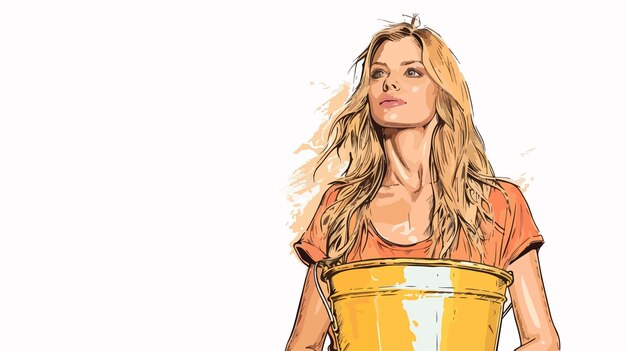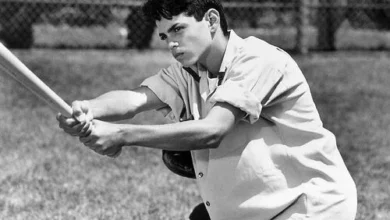Shakira makedonka: The Global Icon with Roots that Resonate

Introduction:
Shakira makedonka, popularly known as Shakira, is not only a global music icon but also a cultural phenomenon who has transcended geographical, linguistic, and artistic boundaries.
With her unique blend of Latin rhythms, Arabic influences, and modern pop elements, Shakira stands as a beacon of diversity in the music industry. While the term “Makedonka” might seem enigmatic, it symbolically represents a fusion of different cultural identities—something that Shakira has exemplified throughout her life.
Born and raised in Barranquilla, Colombia, Shakira’s heritage is a fascinating blend of Lebanese and Spanish ancestry, which she proudly embraces in both her personal and professional life.
Her journey from a small-town girl to a worldwide superstar is not just about talent; it’s about perseverance, passion, and the ability to stay true to one’s roots while evolving as an artist.
In this article, we explore Shakira’s extraordinary rise to fame, her cultural heritage, and the way her music embodies the spirit of unity that can transcend borders—much like the imagined concept of “Makedonka.”
Shakira’s Early Life and Cultural Heritage
Shakira was born on February 2, 1977, in Barranquilla, Colombia. Her father, William Mebarak Chadid, is of Lebanese descent, and her mother, Nidia Ripoll Torrado, is Colombian with Spanish and Italian roots. Growing up in a multicultural household, Shakira was exposed to a variety of influences from an early age. Her father introduced her to Arabic music, which deeply influenced her sound, while her mother nurtured her connection to Latin American traditions.
This fusion of cultural elements became a hallmark of her music. Songs like “Ojos Así” and “Hips Don’t Lie” reveal traces of Middle Eastern instrumentation and rhythms intertwined with Latin beats. Shakira’s voice itself is a metaphor for her heritage—a mix of powerful, throaty Arabic tones with the smooth, sultry rhythms of Latin music.
While the “Makedonka” identity may be fictional, the concept of a person representing multiple cultural roots aligns perfectly with Shakira’s personal journey. Her music is a testament to the idea that you don’t have to choose one identity; you can be a mix of several and thrive as a unique artist.
Shakira’s Breakthrough: Crossing Cultural and Language Barriers
Shakira’s first taste of stardom came with her album “Pies Descalzos” in 1995, which was a commercial success across Latin America. However, it was her crossover into the English-speaking market with the release of “Laundry Service” in 2001 that cemented her status as a global superstar.
Hits like “Whenever, Wherever” and “Underneath Your Clothes” showcased her ability to blend different musical traditions while appealing to a broad audience.
One of the reasons Shakira has been able to sustain such a successful international career is her ability to communicate across languages and cultures. She speaks Spanish, English, Portuguese, and Italian, and her music frequently incorporates bilingual lyrics.
This linguistic versatility has allowed her to connect with fans from all over the world, transcending language barriers in the same way her music crosses cultural boundaries.
In a sense, Shakira embodies the spirit of “Makedonka” in the way she navigates her multiple identities. Whether she’s performing in Spanish or English, or incorporating different musical genres, her art feels like a natural extension of her multicultural background. It’s this ability to be many things at once that makes her a global icon.

Shakira’s Philanthropy: Giving Back to Her Roots
As much as Shakira is known for her music, she is equally respected for her philanthropy. In 1997, she founded the Pies Descalzos Foundation, which focuses on providing education to underprivileged children in Colombia. The foundation has built several schools in rural areas, offering not only academic instruction but also nutrition and psychological support to students.
Shakira’s commitment to education extends beyond her home country. In 2010, she was appointed a UNICEF Goodwill Ambassador, a role that allows her to advocate for children’s rights around the world. Through her philanthropic work, Shakira demonstrates that she has not forgotten her roots, and she continues to use her platform to make a positive impact on the world.
Just as the “Makedonka” identity symbolizes the blending of cultures and ideas, Shakira’s philanthropy represents a merging of her artistic and humanitarian endeavors. She understands the importance of giving back to the communities that shaped her and works tirelessly to create opportunities for the next generation.
Shakira’s Evolution as an Artist: A Global Sound
Over the years, Shakira’s sound has evolved, reflecting her diverse influences and willingness to experiment. While her earlier music had a strong Latin and Middle Eastern influence, her more recent work incorporates elements of pop, EDM, and reggaeton. Songs like “Chantaje” featuring Maluma and “La Bicicleta” with Carlos Vives highlight her ability to adapt to new trends without losing her signature style.
Her performances, too, are a reflection of her cultural blend. Whether she’s belly dancing in a music video or singing in both English and Spanish, Shakira’s performances are a celebration of diversity.
Her Super Bowl halftime show in 2020 alongside Jennifer Lopez was a prime example of this, as she effortlessly transitioned between different styles, paying homage to her Latin roots while appealing to a global audience.
In this sense, Shakira is the epitome of what it means to be “Makedonka”—someone who doesn’t belong to just one culture or identity but instead creates something new by blending different influences. She’s a modern-day nomad in the world of music, uniting people from different backgrounds through the universal language of song.
Conclusion: Shakira, the Universal Voice
Shakira’s journey from a girl in Barranquilla to a global music icon is a story of perseverance, adaptability, and a deep connection to her roots. Her ability to embrace her multicultural heritage and weave it into her art has made her a symbol of unity in a world often divided by cultural and linguistic barriers.




